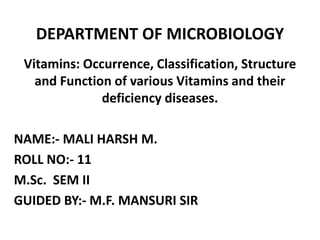The document provides a comprehensive overview of vitamins, categorizing them into fat-soluble (A, D, E, K) and water-soluble (B complex and C) groups, detailing their structures, sources, daily requirements, functions, and deficiency diseases. Each vitamin is discussed with specific functions such as supporting vision, regulating calcium levels, and aiding in energy metabolism. The document emphasizes the importance of vitamins in maintaining health and highlights the consequences of deficiencies.






































